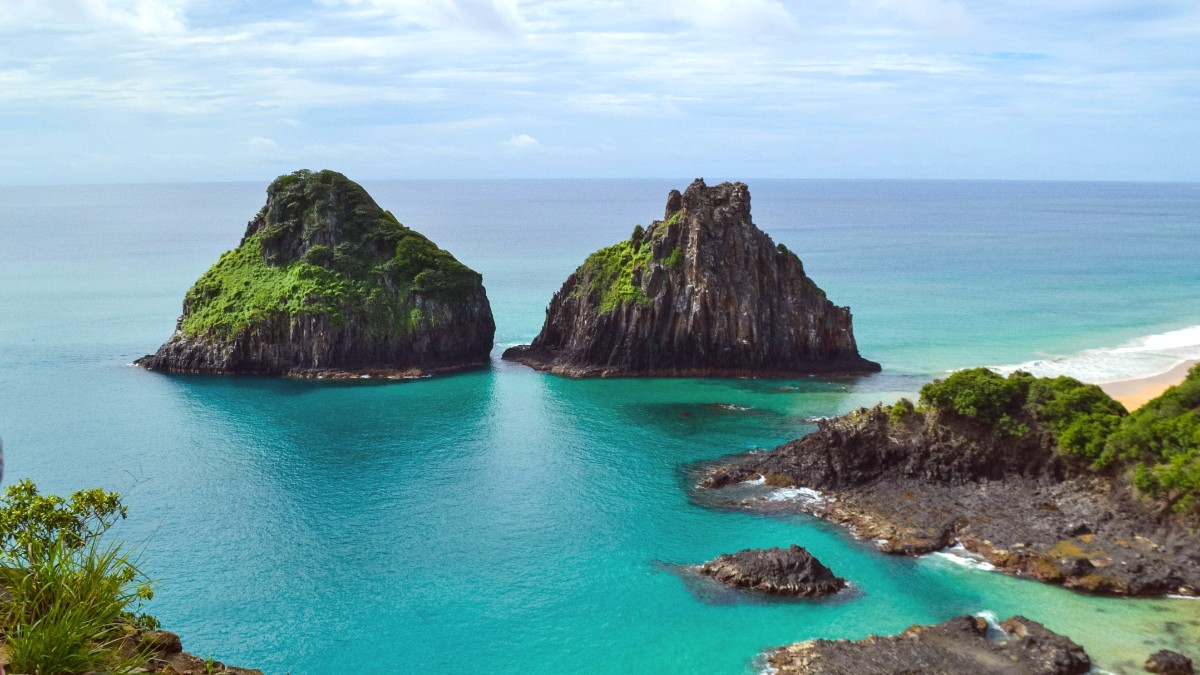
Brazil
The island operates under strict environmental regulations. Single-use plastics are banned, and visitor numbers are controlled. This approach safeguards its delicate ecosystem and native species.
Fernando de Noronha lies in the Atlantic Ocean, approximately 350 kilometers (217 miles) off the northeast coast of Brazil. The archipelago has 21 islands and islets, with the main island, also named Fernando de Noronha, as the only inhabited one. Its volcanic origins surface in dramatic rock formations and cliffs.
Morro do Pico, the highest point, is a distinctive landmark. The island’s position within the equatorial belt ensures a tropical climate. Surrounding waters form a protected marine park, safeguarding rich biodiversity. The island's small size, about 26 square kilometers (10 square miles), permits easy exploration, with landscapes from serene beaches to rugged trails.
Official discovery in 1503 by Portuguese explorers brought the island into European awareness. Its strategic location made it a point of contention for centuries, with brief periods under Dutch and French rule. Remnants of these periods, like forts, are visible today.
Fortaleza de Nossa Senhora dos Remédios, overlooking Vila dos Remédios, is a prominent example of the island's past as a defense outpost. The island also served as a penal colony for a period. This history, coupled with its natural environment, shaped the island’s unique identity.
Official discovery by Portuguese explorers.
Portuguese stronghold, with brief Dutch and French control.
Historic fort overlooking Vila dos Remédios.
Served as a correctional facility at one point.
Modern development prioritizes historical and natural preservation.
The island's complex past shapes its unique identity. Today, its historical sites complement the natural attractions, offering visitors insight into the island's journey from a contested strategic point to a protected ecological sanctuary. This approach helps ensure both its past and future remain preserved.
The island features unique flora and fauna, many existing only here. Strict environmental regulations protect its delicate ecosystem. Single-use plastics are banned, and visitor numbers are controlled.
Fernando de Noronha is a world-class diving and snorkeling destination. Beyond the sea, the island presents opportunities for hiking, surfing, and observing wildlife. It is a place where nature takes center stage, inviting visitors to connect with unspoiled wonders.
Visitors arrive by air, mainly from Recife or Natal. Upon arrival, travelers pay a daily Environmental Preservation Tax (TPA) and a National Marine Park Entrance Fee (PARNAMAR). The island maintains a relaxed, casual atmosphere. While known for its expense, careful planning accommodates various travel styles.
Fernando de Noronha presents a compact yet comprehensive travel experience. This includes unique flora and fauna, with many species endemic to the island. Its well-deserved reputation as a world-class diving and snorkeling destination attracts underwater enthusiasts.
The island offers a destination where nature takes center stage, inviting visitors to connect with the planet's unspoiled wonders.
A protected UNESCO World Heritage site with strict environmental rules.
Flights from Recife or Natal. Fees for preservation and park entry apply.
Reputation for expense. Planning adjusts for various travel budgets.
Upon arrival, travelers pay a daily Environmental Preservation Tax (TPA) and a National Marine Park Entrance Fee (PARNAMAR). Both are necessary for access to the island's protected areas.
Only the main island of Fernando de Noronha is inhabited.
The archipelago consists of 21 islands and islets.
The island spans about 26 square kilometers (10 square miles).
Small, basic terminal. Limited cafes and services. Quick check-in/baggage claim.
Brazilian Real (BRL). ATMs are limited. Credit/debit cards accepted. Cash useful for small purchases.
Type N outlets (220V). Vivo cellular coverage is generally best, though it can be spotty.